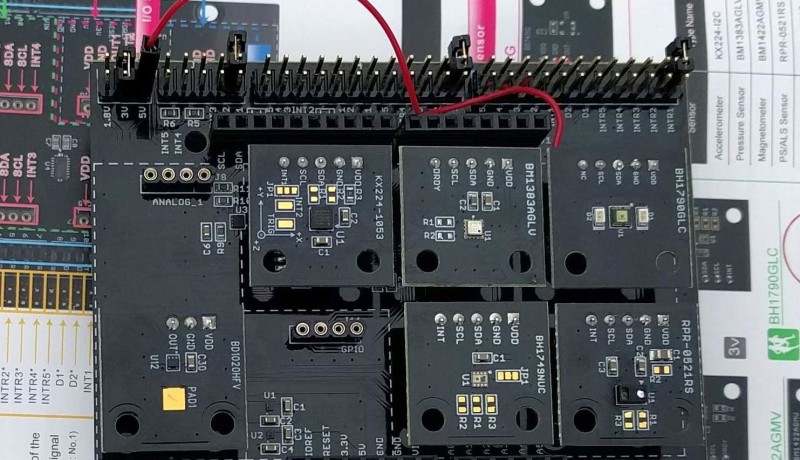Review: Rohm SensorShield
October 10, 2018
on
on

A lot of applications require one or more sensors to do their job properly. Parameters typically monitored include temperature, humidity, and ambient light intensity or colour. Because these parameters are so common, sensors to measure them exist in many variations and flavours, and choosing the one that is the perfect fit for your design is not always easy. What you need is a handy sensor evaluation platform.
A good tool makes work easier by removing tasks more or less unrelated to what you are trying to achieve; it should let you focus on your target, not on getting things to work. The ROHM SensorShield was developed with this thought in mind. Designed as an add-on board — a.k.a. shield — for the popular Arduino platform, it offers a plug-and-play solution for comfortable sensor evaluation.
Up to eight sensors, each mounted on a small breakout board, can be plugged onto the shield. Arduino libraries and programming examples support the sensors, allowing the user to get to the data quickly. Sensors with binary or analogue outputs as well as those with I2C ports can be used.
For a free copy of Elektor's in-depth review of the ROHM SensorShield and its sensors, please click here.
A good tool makes work easier by removing tasks more or less unrelated to what you are trying to achieve; it should let you focus on your target, not on getting things to work. The ROHM SensorShield was developed with this thought in mind. Designed as an add-on board — a.k.a. shield — for the popular Arduino platform, it offers a plug-and-play solution for comfortable sensor evaluation.
Up to eight sensors, each mounted on a small breakout board, can be plugged onto the shield. Arduino libraries and programming examples support the sensors, allowing the user to get to the data quickly. Sensors with binary or analogue outputs as well as those with I2C ports can be used.
For a free copy of Elektor's in-depth review of the ROHM SensorShield and its sensors, please click here.
Read full article
Hide full article



Discussion (2 comments)
Nigel Trewartha 6 years ago
John Mr Moran 6 years ago